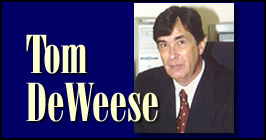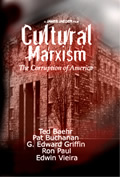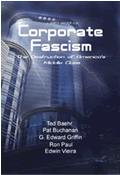TAKING
THE AGENDA 21 FIGHT TO THE MAINE STATE LEGISLATURE
PART 2 of 2
by Tom
DeWeese
May 2, 2015
NewsWithViews.com
They are all the same basic plans, no matter where they are in the nation. One thing they all have in common – none of them are LOCAL!
That’s by design, because most are being implemented by the same planners nationwide, fueled by the same grant programs, and aided by the same NGO private groups.
Smart growth planners promote their schemes by insisting that Americans live the wrong way. And they use land use regulations to impose on others what they insist is the right way to live.
In Omaha, Nebraska, government and NGO forces are working hard to sell the community on a grand plan for the future called Heartland 2050.
Of course, as usual, it’s not just for Omaha – but for eight full counties in the surrounding area, all combined into the same regional plan run by an unelected regional council. And the plan openly says it is Sustainable Development.
Listen to the sales pitch.
The Goal of Heartland 2050, according to its promoters, is to develop a strategic “vision” for the region’s development over the next 30 years to assure “proper growth?”
“The Metro area is always changing,” say proponents, “but is it moving in the right direction?”
Stop right there! You must ask – in the right direction according to whom?
This massive plan will lay the ground rules for transportation, housing, jobs, property/land use, education, and even health care.
What does all of that mean?
It means they intend to put a line around the communities involved and declare little or no growth outside that line.
That means the focus for future housing will be for high density neighborhoods with residents living in high rise housing. Walkable communities, they call it.
It means, the use of private cars will be discouraged in favor of public transportation, bicycles or walking.
How is that done? Several ways. Higher taxes on cars and on gasoline – and there are now plans being developed in various states to tax every mile you drive.
Heartland 2050 includes the program called the “Complete Street.” That is an edict that cars must share the road with bicycles.
It calls for “Traffic Calming,” which means large speed bumps placed in the center of residential streets that make it very unpleasant to drive over.
Across the nation, through smart growth plans communities are now building residential apartment buildings without parking lots.
It’s all designed to discourage your interest in driving so that you use bikes for short trips and public transportation, including light rail trains.
So, how does all of this effect us? Will life in the community improve?
Well, the best evidence I can give you to predict the future is to look where all of this has already been tried.
Over a decade ago, Portland, Oregon was announced as the poster child for Smart Growth policy. There it was nearly fully implemented.
You can take an airplane over Portland and actually see the smart growth line around the city. On one side is vast, dense development. On the other side is nothing but open land.
Today, local planners assure the community that they want citizen input -- that each will have a say in every aspect of the plan.
Well, surveys show that over 85% of Americans want to live in single-family homes with a yard and a drive way. But smart growth planners ignore that fact.
Instead, the plans call for major controls on suburban housing development out of concern for future population growth. Housing to provide for growing population density becomes the concern.
You see, once the ban on suburban development (urban sprawl, the call it disdainfully) is in place, there is now a controlled living area. It doesn’t grow. What happens when the population of the community does grow? It gets crowded. More densely populated.
In Portland, the planners kept upping the density requirements for housing.
To increase urban densities, the planners turned dozens of neighborhoods of single-family homes into apartments and condos.
If you owned a vacant lot, you could not build a single-family house on it – you would have to build a row house or apartment. In some cases, the restrictions were so strict that if your house burned down, you could not rebuild a single family home on the property.
Eventually, Portland planners decided that row houses and low-rise apartments were not enough. They changed the rules to enforce the building of high rise apartment buildings. Pack and Stack, we call them.
They call them livable, walkable communities. Fewer cars, fewer CO2 emissions, we are assured.
Then they gave tax breaks, below-market land sales, and other subsidies to developers who built the high rises. That meant that traditional neighborhoods were invaded by high rise developments.
The center of the plan was the light rail train system. The desirable homes (according to the planners) were those built along the rail line. This would assure convenience for ridership, they claimed.
Whoops. Independent studies reveal that the people living in them don’t ride public transit any more than residents in single family neighborhoods.
In Atlanta, Georgia, the push was on to build a light rail transportation system. One resident studied the plan, took the official estimated construction cost and overlaid that with the number of predicted riders of the system and found that he could buy every single rider their own limo and even throw in a driver.
The result of Portland’s grand plan is that increased density has destroyed the community atmosphere. Congestion is worse, Housing and consumer costs are higher and urban services such as fire, police, and schools have declined as the city took money from these programs to subsidize high-density developers.
Now for those of you worried about social equity and the needs of the poor and minorities, I’m here to tell you that Smart Growth policy is a very bad deal for the poor.
The economics of Smart Growth are sobering and hit few harder than the poor. As growth boundaries limit space, new home construction drives up housing prices beyond the reach of most.
Studies show that prior to the Smart Growth surge in the 1990s, an average home cost just 2.5 to 3 times the median income of community residents. So, a person earning $40,000 annually could likely purchase a home for $120,000.
But in 2006, in Smart Growth cities like Boston, Portland and San Diego, homes respectively cost 6.5 and 10.5 times the median family income. Homes costing just 4 times or more annual incomes are considered “seriously unaffordable.”
Today, a family in San Diego earning $125,000 would be hard-pressed to afford a home 10 times that amount.
These Smart Growth economic realities are now forcing low income and young people to rent and downsize. The poor have little hope of ever buying a home and experiencing what used to be called the American dream.
And here is the kicker. In 2012, the American Planning Association, the main group in the nation pushing Smart Growth policy, conducted research to confirm that the policy was working.
The last summary paragraph of that report is the most telling. It says: “The current planning policy strategies for land use and transportation have virtually no impact on the major long term increases in resource and energy consumption. They generally tend to increase costs and reduce economic competitiveness….In many cases, the socioeconomic consequences of less housing choice, crowding, and congestion may outweigh the very modest C02 reduction benefits.”
In short, the American Planning Association found that the very policy that it spreads across the nation DOES NOT WORK!
But have they given up on it? Not on your life. Why, Money. The grants. The APA’s life blood.
Well, this is just a quick example of Agenda 21/Sustainable Development policies that have proven to be unworkable, and in fact actually destroying American culture and society.
The question now is what do we do about it?
Many states have tried to pass a one size fits all bill to ban Agenda 21 and protect private property rights.
Experience is now showing us that doesn’t really work. For one thing, the proponents of Agenda 21 no longer use that term. They just deny their ideas are part of it, claiming them to be local.
Second, the Agenda is so vast, so all invasive of every aspect of our lives, that one bill can’t possibly be effective in stopping it.
So here are a few of my recommendations on how to develop an effective counter plan.
First, understand that Agenda 21 is being implemented through three main points of attack.
1 - Attacks on private property rights. The fact is, Sustainable Development cannot be implemented without diminishing private property.
2 - Creation of non-elected Regional councils and governments. This is the fastest growing change in government today and is the reason I say Agenda 21 is changing our system of government. It is taking government farther from the voters.
3 - Federal grants with severe Sustainable strings attached are the poison that feeds the beast.
One bill will not solve this situation. You need a legislative plan to attack these three threats through a series of legislative initiatives.
Concerning the establishment of regional councils and governments, while governments certainly need to talk to each other, they must not be allowed to legislate. Perhaps there are elected officials on those boards, but they were not elected to that particular board.
If they have plans that they think will benefit their communities, then they must be forced to come home to face their constituents in proposing these ideas. They must not be allowed to hide behind closed doors, ignoring possible opposition.
And regional councils must not be allowed to apply for federal grants. That must be the job of elected bodies. In fact, one solution designed in the tiny community of Rindge, New Hampshire, makes it necessary that there be a vote of the people before the local government can apply for any new HUD grants.
As for protection of private property rights, the most important element of legislation is to define your terms. Too many are trying to pass legislation that simply says we are going to protect property rights. What does that mean?
Today, many don't even understand what property rights are, so you must be specific.
I have found a definition that I think is the best guideline. It was written by a Washington State Supreme Court Justice named Richard B. Sanders. He wrote it in 1997 because his court was having to deal with a lot of property rights cases due to Agenda 21 policy. But the court didn't have a proper definition. So he wrote this one:
"Property in a thing consists now merely in its ownership and possession, but in the unrestricted right of use, enjoyment, and disposal. Anything which destroys any of the elements of property, to that extent, destroys the property itself. The substantial value of property lies in its use. If the right of use be denied, the value of the property is annihilated and ownership is rendered a barren right."
The Planners will swear support for protection of property rights while at the same time denying use. USE - that is the key word.
Sustainable proponents will adamantly oppose this approach. They will attack the bill containing that language, saying you are opening the way for anarchy.
They will dream up crazy scenarios to paint a picture of horror if homeowners are aloud to use their own property. Such as, someone might put a smelly pig farm next door to you. And they will say it drastically limits local governments from doing their job.
Neither of these are true. First, the problem with planning is it tries to enforce a one-size-fits-all straight jacket that attempts to anticipate any possible problem.
Government in a free society must stop trying to micro- manage people's lives and let them deal with each other until there is a real problem. Since human civilization began there have been ways for individual property owners to deal with specific problems – nuisance laws. And, in most cases, these can be handled in the courts between the two parties.
It is quite possible that no problems will ever actually arise that the local government will need to handle. After all, that is how most communities grew for the better past of 200 years or more.
But the rules and regulations of Sustainable Development aren’t really about protecting one neighbor from another. Nor are they about creating livable communities.
They are about control in a deliberate attempt to change human society to fit someone else’s political agenda.
Private property ownership is the reason the United States has been the richest, freest nation in the world.
Isn‘t it significant to see that as private property comes under attack through Sustainable Development, that our country is also becoming less wealthy and less free!
It’s time that we had a government that treats property owners like OWNERS – not chattel to be pushed around at the planner’s whim. It’s time to treat property owners like adults.
|
|
Finally, let me just leave you with this thought. As you search for ways to control the growth and power of government, consider this; with each new bill that is introduced into the legislature, give it the SCRAP test.
Does this bill increase the Size, Cost, Reach And Power of Government? If so, SCRAP it.
No matter how wonderful your plans may sound, make sure they first and foremost protect the private property rights of the owners. These are the most effective actions this body can take to stop Agenda 21 and reign in run away government.
Click here for part -----> 1, 2,
� 2015 Tom DeWeese - All Rights Reserved
Tom DeWeese is one of the nation’s leading advocates of individual liberty, free enterprise, private property rights, personal privacy, back-to-basics education and American sovereignty and independence.
A native of Ohio, he’s been a candidate for the Ohio Legislature, served as editor of two newspapers, and has owned several businesses since the age of 23. In 1989 Tom led the only privately-funded election-observation team to the Panamanian elections. In 2006 Tom was invited to Cambridge University to debate the issue of the United Nations before the Cambridge Union, a 200 year old debating society. Today he serves as Founder and President of the American Policy Center and editor of The DeWeese Report
For 40 years Tom DeWeese has been a businessman, grassroots activist, writer and publisher. As such, he has always advocated a firm belief in man’s need to keep moving forward while protecting our Constitutionally-guaranteed rights.
The DeWeese Report , 70 Main Street, Suite 23, Warrenton Virginia. (540) 341-8911
E-Mail: admin@americanpolicy.org
E-Mail: ampolicycenter@hotmail.com
Website: www.americanpolicy.org














 Share
This Article
Share
This Article





